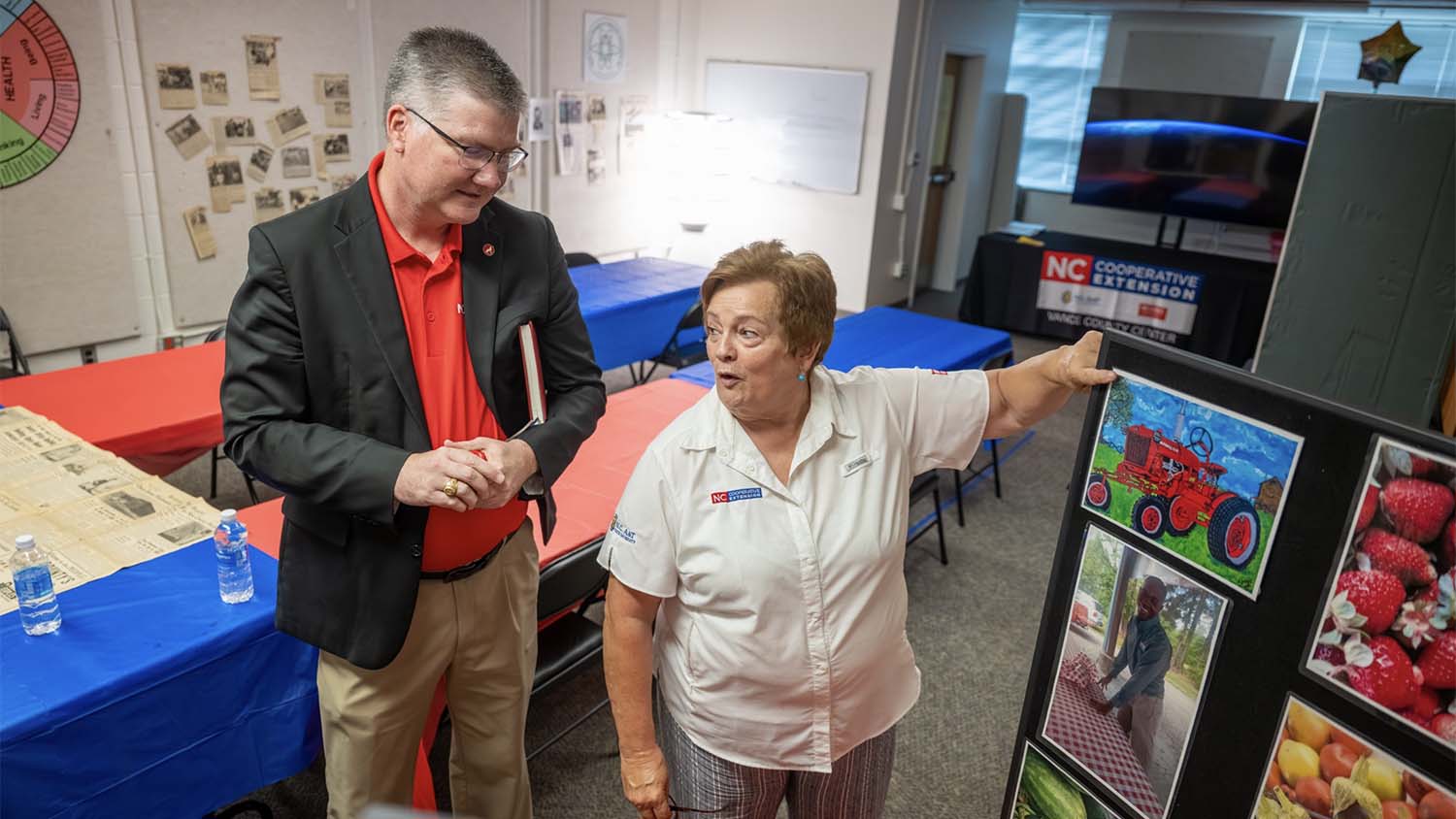N.C. State University dedicates first 'green' building at Eastern 4-H Center
The facility that is expected to be N.C. State University’s first “green” LEED-certified building was dedicated Jan. 6, but it isn’t on campus. The conference center at the Eastern 4-H Educational Center in Tyrrell County was dedicated before a crowd of 300, including 4-H’ers, N.C. State’s Chancellor Randy Woodson and N.C. Secretary of State Elaine Marshall.
The conference center is awaiting LEED certification — Leadership in Energy and Environmental Design — the rating system for green buildings created by the U.S. Green Building Council. It has enough points for LEED Gold, but could be awarded LEED Silver.
The new conference center building includes a recreation hall, classrooms and dining room. Those participating in the dedication included Woodson, Dean Johnny Wynne of N.C. State’s College of Agriculture and Life Sciences and State Representative Bill Owens along with many other local and area officials and dignitaries.
Speakers praised the efforts of former Senate Pro Tem Marc Basnight of Manteo for helping acquire funding for the project, which was part of a special appropriation for upgrades and renovations at state 4-H camps. Basnight retired from the state senate earlier this month.
The Eastern 4-H Environmental Education Conference Center near Columbia, the newest of North Carolina’s five 4-H camping facilities, opened its doors in May 2001 and has continued to grow. North Carolina’s 4-H program is based in N.C. State’s College of Agriculture and Life Sciences, which oversees the camps’ operations. The 21,000-square-foot conference center building includes a gymnasium, catering kitchen and dining facilities, an office and three classrooms.
“It’s a great place for campers to come in and play when it’s raining,” said Lisa Maune, registered architect and LEED accredited professional, and N.C. State University’s assistant director of design and construction services. The facility also will be used for conferences and retreats.

The center’s green features include many recycled and sustainable materials: insulation made from recycled denim, recycled ceramic tile, concrete exterior panels and bamboo flooring. Lighting is controlled by sensors that shut off when a room is not occupied. Exterior glass is treated to allow light in, but keep heat out, and a rain garden helps filter storm runoff from the building. Maune explained the building is heated and cooled by an efficient geothermal system, although this feature does not earn LEED points because of its dependence on a heat pump.
Architect Albi McLawhorn of MHAworks said the building was oriented to capture sunlight on the north side and avoid the sun’s heat on the south side. Porches on the south side of the building shelter windows from the sun during hot summer months, while allowing low sunlight in for warmth during the winter. MHAworks actually placed a constructed model of the building at the physical site to help make decisions on the angle of the porches.
Richard Barlow of MHAworks said that the use of bamboo flooring offered a more sustainable material. As a grass, bamboo has a life cycle of about eight years, as opposed to 20 years for wood that comes from trees. “Every aspect of this building, every material that was chosen for it was given that thought, to meet the high criteria required for LEED certification,” Barlow said.
Lee Scripture, director at the Eastern 4-H Center, said, “The addition of this facility will allow us to make great strides toward reaching our programmatic potential. This building provides much needed air-conditioned space for our campers during the summer. It will also allow us to provide more meeting and conference space to our growing clientele. This new conference and recreation building will serve the youth and adults of North Carolina for many generations.”
–Written by Natalie Hampton, natalie_hampton@ncsu.edu or 919.513.3128
- Categories:


